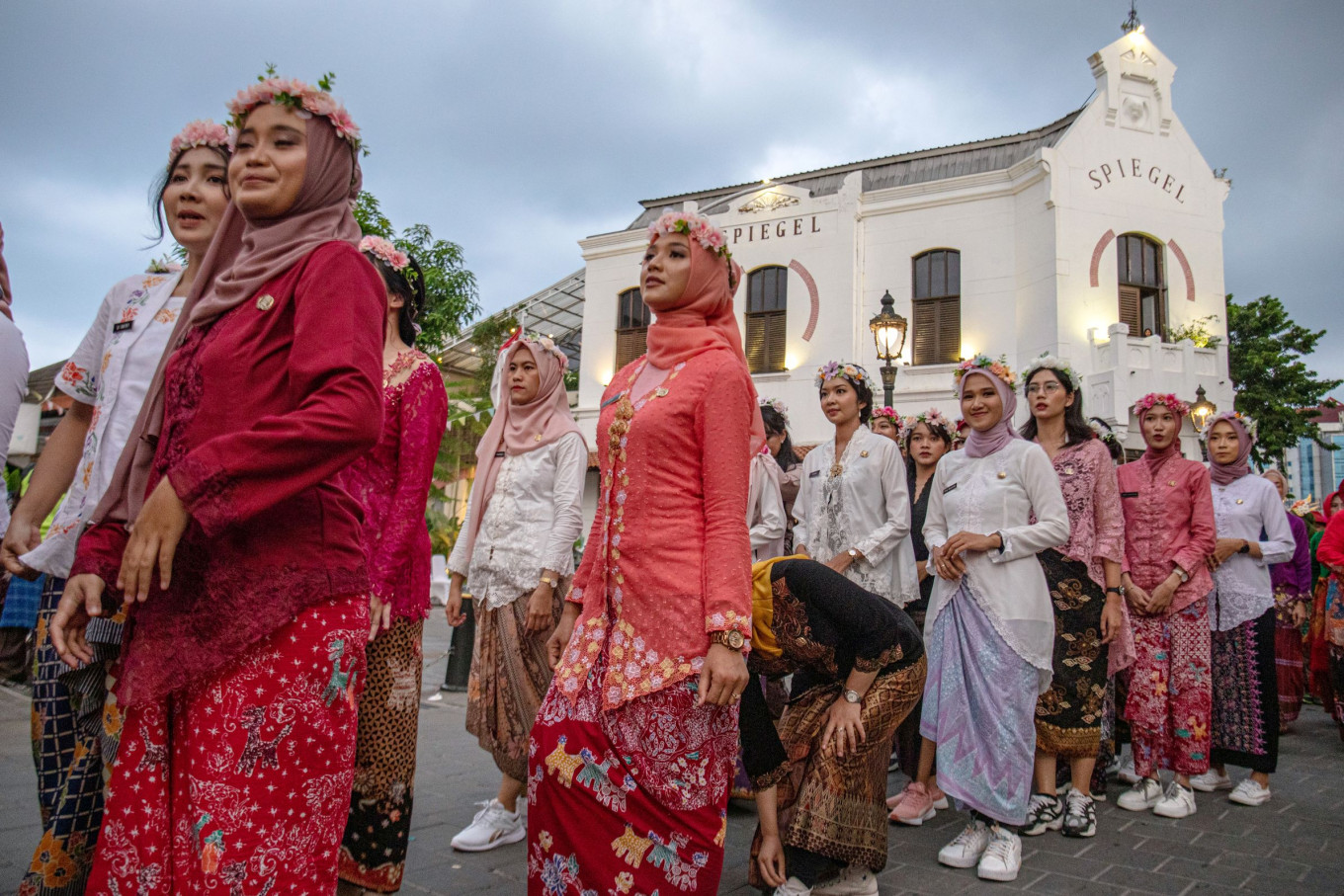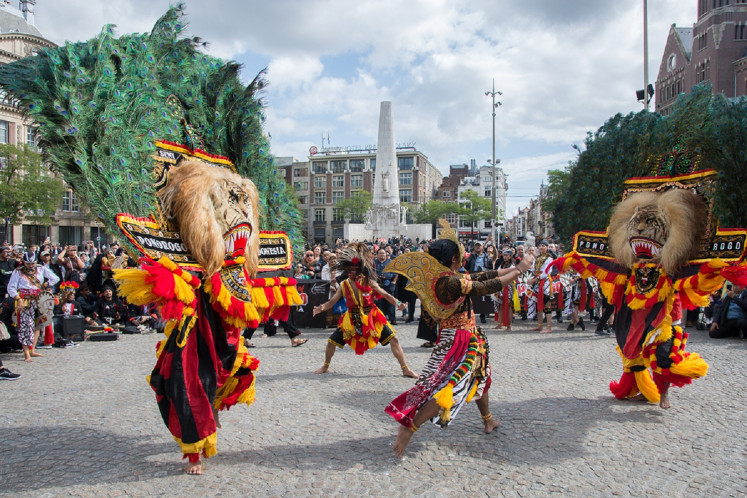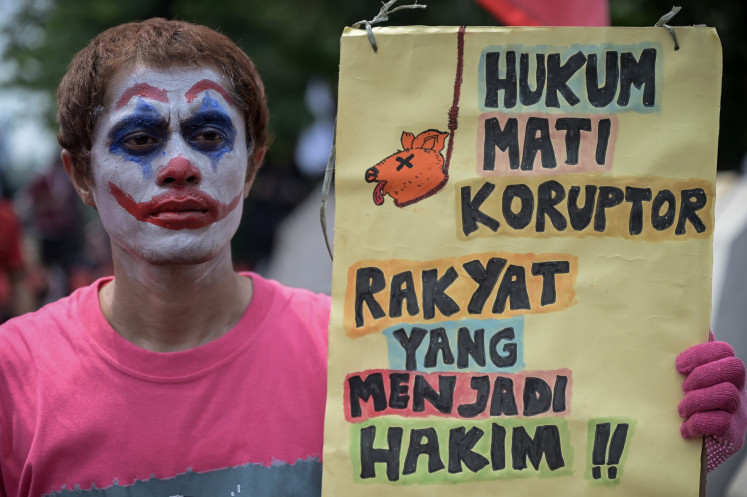Popular Reads
Top Results
Can't find what you're looking for?
View all search resultsPopular Reads
Top Results
Can't find what you're looking for?
View all search resultsKebaya, Reog Ponorogo now listed as UNESCO cultural heritage
UNESCO has officially placed the kebaya on the Representative List of the Intangible Cultural Heritage of Humanity, following a joint submission between Indonesia and four other Southeast Asian countries.
Change text size
Gift Premium Articles
to Anyone
 Women in kebaya and sarongs parade during Semarang’s 476th anniversary celebration in the Central Java provincial capital on May 5, 2023. UNESCO officially placed the kebaya on the Representative List of the Intangible Cultural Heritage of Humanity on Dec. 4, 2024, following a joint submission between Indonesia and four other Southeast Asian countries. (Antara/Aji Styawan)
Women in kebaya and sarongs parade during Semarang’s 476th anniversary celebration in the Central Java provincial capital on May 5, 2023. UNESCO officially placed the kebaya on the Representative List of the Intangible Cultural Heritage of Humanity on Dec. 4, 2024, following a joint submission between Indonesia and four other Southeast Asian countries. (Antara/Aji Styawan)
T
he United Nations Educational, Scientific and Cultural Organization (UNESCO) has officially recognized the kebaya as an element of cultural heritage, placing it on the Representative List of the Intangible Cultural Heritage of Humanity.
The decision was announced on Wednesday during the 19th session of the Intergovernmental Committee on Intangible Cultural Heritage (ICH) in Asunción.
Culture Minister Fadli Zon said the kebaya was a joint submission by Brunei Darussalam, Malaysia, Singapore and Thailand.
“This joint submission effort reflects the spirit of cooperation and unity among Southeast Asian countries in preserving shared cultural heritage,” Fadli said, as reported by kompas.com.
According to Fadli, the kebaya is more than just an item of traditional attire, as it symbolizes the cultural identity of Southeast Asia.
The kebaya has been showcased in contemporary designs at various beauty pageants and cultural appreciation events. With its newly recognized status as an element of world cultural heritage, the kebaya is expected to inspire greater public awareness of preserving intangible cultural heritage.
“We hope the recognition of the kebaya by UNESCO can raise global awareness of the importance of preserving intangible cultural heritage, as it is not just a cultural symbol but also a unifying element that transcends ethnic, religious and national boundaries,” said Fadli.
According to UNESCO's official website, the Representative List of the Intangible Cultural Heritage of Humanity includes elements of intangible cultural heritage that highlight diversity. The list also aims to raise awareness of the significance of the elements.
Reog Ponorogo is performed in The Hague, Netherlands. UNESCO officially placed Reog Ponorogo on the Representative List of the Intangible Cultural Heritage of Humanity on Dec. 3, 2024, (Ministry of Foreign Affairs' official website/File)Previously, on Tuesday, the traditional art of Reog Ponorogo from East Java was also designated on the list in the category “In Need of Urgent Safeguarding”.
“The recognition not only highlights the importance of Reog art but also emphasizes the commitment to conserve Indonesian cultural identity for the next generation,” the Indonesian delegation chairman, who is also the ambassador to Paris and representative to UNESCO, Mohamad Oemar said in a written statement, as quoted by kompas.com.
Reog Ponorogo is a performing art from Ponorogo regency, East Java, which reflects the harmony between dance, music and mythology.
The art depicts bravery, solidarity and dedication and has been part of the identity of the Ponorogo people for centuries. Reog is also a symbol of communal cooperation, which is reflected in its creative process, from making the masks to collaboration among artists, craftsmen and the local community.
Other Indonesian cultural heritage items that have been previously recognized by UNESCO are wayang, keris, batik, batik training, angklung from West Java, Saman dance, noken bags from Papua, three genres of Balinese dance, phinisi boat making, pencak silat, pantun, gamelan traditional ensemble and the tradition of drinking jamu (traditional herbal beverages).










